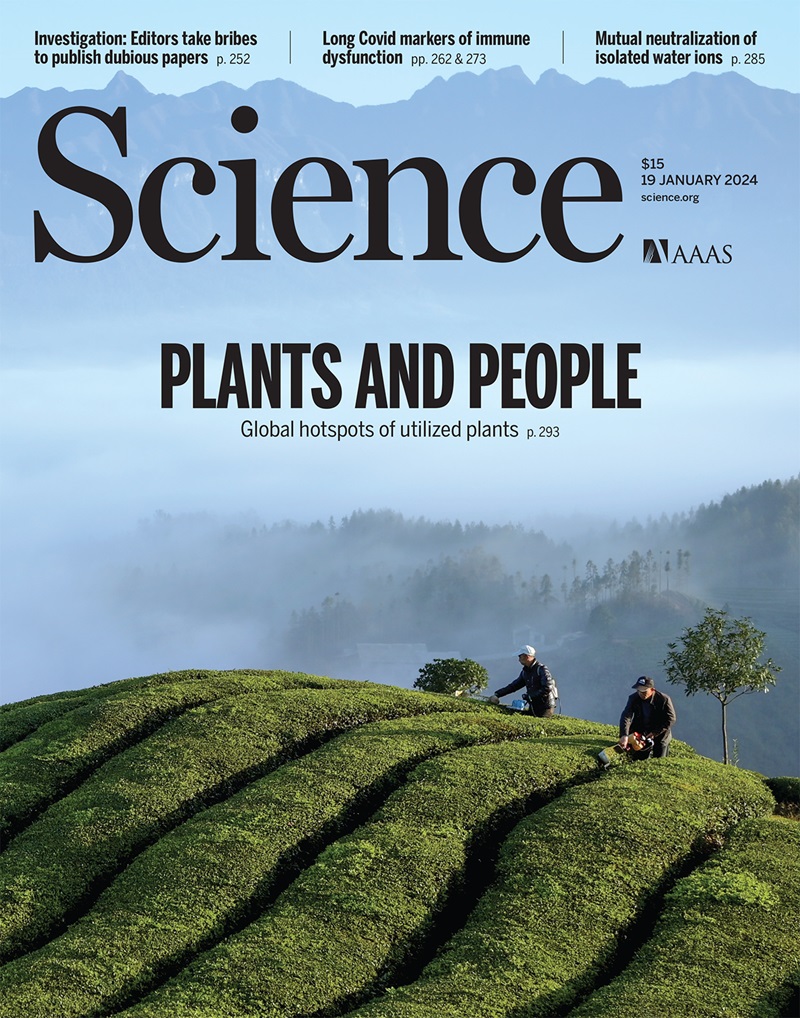A cytoplasmic osmosensing mechanism mediated by molecular crowding–sensitive DCP5
IF 45.8
1区 综合性期刊
Q1 MULTIDISCIPLINARY SCIENCES
引用次数: 0
Abstract
Plants are frequently challenged by osmotic stresses. How plant cells sense environmental osmolarity changes is not fully understood. We report that Arabidopsis Decapping 5 (DCP5) functions as a multifunctional cytoplasmic osmosensor that senses and responds to extracellular hyperosmolarity. DCP5 harbors a plant-specific intramolecular crowding sensor (ICS) that undergoes conformational change and drives phase separation in response to osmotically intensified molecular crowding. Upon hyperosmolarity exposure, DCP5 rapidly and reversibly assembles to DCP5-enriched osmotic stress granules (DOSGs), which sequestrate plenty of mRNA and regulatory proteins, and thus adaptively reprograms both the translatome and transcriptome to facilitate plant osmotic stress adaptation. Our findings uncover a cytoplasmic osmosensing mechanism mediated by DCP5 with plant-specific molecular crowding sensitivity and suggest a stress sensory function for hyperosmotically induced stress granules.

由分子拥挤敏感性 DCP5 介导的细胞质渗透感应机制
植物经常受到渗透胁迫的挑战。植物细胞如何感知环境渗透压的变化尚未完全清楚。我们报告了拟南芥脱帽鞘 5(DCP5)作为一种多功能细胞质渗透传感器的功能,它能感知并响应细胞外的高渗透压。DCP5 内含植物特异性分子内拥挤传感器(ICS),该传感器会发生构象变化并驱动相分离,以响应渗透压增强的分子拥挤。在暴露于高渗透压时,DCP5 会快速、可逆地组装成富含 DCP5 的渗透胁迫颗粒(DOSGs),其中封存大量 mRNA 和调控蛋白,从而适应性地重新规划翻译组和转录组,促进植物对渗透胁迫的适应。我们的发现揭示了一种由DCP5介导的细胞质渗透传感机制,该机制具有植物特异的分子拥挤敏感性,并表明高渗透诱导的胁迫颗粒具有胁迫传感功能。
本文章由计算机程序翻译,如有差异,请以英文原文为准。
求助全文
约1分钟内获得全文
求助全文
来源期刊

Science
综合性期刊-综合性期刊
CiteScore
61.10
自引率
0.90%
发文量
0
审稿时长
2.1 months
期刊介绍:
Science is a leading outlet for scientific news, commentary, and cutting-edge research. Through its print and online incarnations, Science reaches an estimated worldwide readership of more than one million. Science’s authorship is global too, and its articles consistently rank among the world's most cited research.
Science serves as a forum for discussion of important issues related to the advancement of science by publishing material on which a consensus has been reached as well as including the presentation of minority or conflicting points of view. Accordingly, all articles published in Science—including editorials, news and comment, and book reviews—are signed and reflect the individual views of the authors and not official points of view adopted by AAAS or the institutions with which the authors are affiliated.
Science seeks to publish those papers that are most influential in their fields or across fields and that will significantly advance scientific understanding. Selected papers should present novel and broadly important data, syntheses, or concepts. They should merit recognition by the wider scientific community and general public provided by publication in Science, beyond that provided by specialty journals. Science welcomes submissions from all fields of science and from any source. The editors are committed to the prompt evaluation and publication of submitted papers while upholding high standards that support reproducibility of published research. Science is published weekly; selected papers are published online ahead of print.
 求助内容:
求助内容: 应助结果提醒方式:
应助结果提醒方式:


